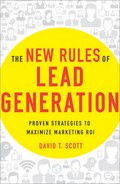Calculating the Costs
One challenge of direct mail is that it’s fairly expensive. Like trade shows, direct mail requires a huge, up-front investment. Therefore, you want to engage in direct mail only in scenarios where your ROMI will be very high.
In terms of ROMI, direct mail works best if you are selling (1) a very expensive product, such as a car or recreational boat, or (2) a product or service that will provide a significant annuity to your company over a long time, such as insurance or a credit card service. If you are selling a very inexpensive product (e.g., a one-time-purchase product for $10 each), direct mail may not be the best tactic for you to use.
You need to be able to justify the expense of using direct mail. The key reasons for using direct mail are (1) you think your target audience will respond well to the tactic, and (2) the response to your campaign will be high enough to give you a significant ROMI over the initial expense of creating it. Both of these must be true for you to use direct mail successfully.
The principal expenses of direct mail are:
![]() Buying or renting a mailing list
Buying or renting a mailing list
![]() Printing the direct mail piece
Printing the direct mail piece
![]() Paying for the shipping costs
Paying for the shipping costs
With direct mail, the expense of renting or purchasing a list is typically the same as with other tactics that require mailing or contact lists. The real expense comes with the printing and mailing of the piece.
Direct mail is similar to e-mail marketing in that the larger your target universe, the higher the response you will get. For example, you will get a higher response if you ship a direct mail piece to 5,000 potential customers than you will if you ship the piece to only 500 customers. But where you can create an e-mail marketing campaign virtually (e.g., on the computer) for very little money, a direct mail campaign requires the production and shipping of a large number of physical mail pieces.
A CASE EXAMPLE
Let’s look at a case example for calculating costs for a direct mail campaign. Say you decide to produce and send a six-page, 8 × 11-inch brochure on your product or service. This brochure is small enough that it can be shipped in an ordinary mailing envelope.
You might pay a list owner $500 for a mailing list of 5,000 target customers and their addresses. Then it may cost you $3.00 apiece to print 5,000 copies of the brochure, for a total of $15,000. To ship each brochure, it may cost you a bulk mail postal rate of 25¢ per envelope, for a total of $1,250. (Keep in mind that you can often save money over the standard postal rate by shipping in bulk.) Your total expenses for this direct mail campaign amount to $16,750.
Now let’s say you get a 1% response rate to the campaign. Out of 5,000 target customers, 50 respond to the brochure to become leads. Of those 50 leads, maybe half (25) convert to become customers. This means your cost-per-action (CPA) for the campaign is $670 per customer ($16,750 ÷ 25 = $670).
Will this direct mail campaign provide a significant ROMI? It depends on what you’re marketing. If you’re marketing a one-time-only home service like driveway repavement, which costs only about $400–$500, this campaign would produce a negative ROMI. Your expenses were too high. (A less expensive campaign, such as printing a one-sheet mailing flyer, might have provided a better ROMI.)
On the other hand, if you are marketing an insurance package, the monthly insurance premiums that each converted customer pays will justify the $670 CPA in a very short time. If the customer stays with your company over several years, you will earn a significant long-term ROMI for the direct mail campaign. If you are marketing very expensive products, like BMWs or recreational speedboats that sell in the $100,000 range, one sale will be more than enough to justify the expense of your direct mail campaign. Twenty-five sales will produce an excellent ROMI.
